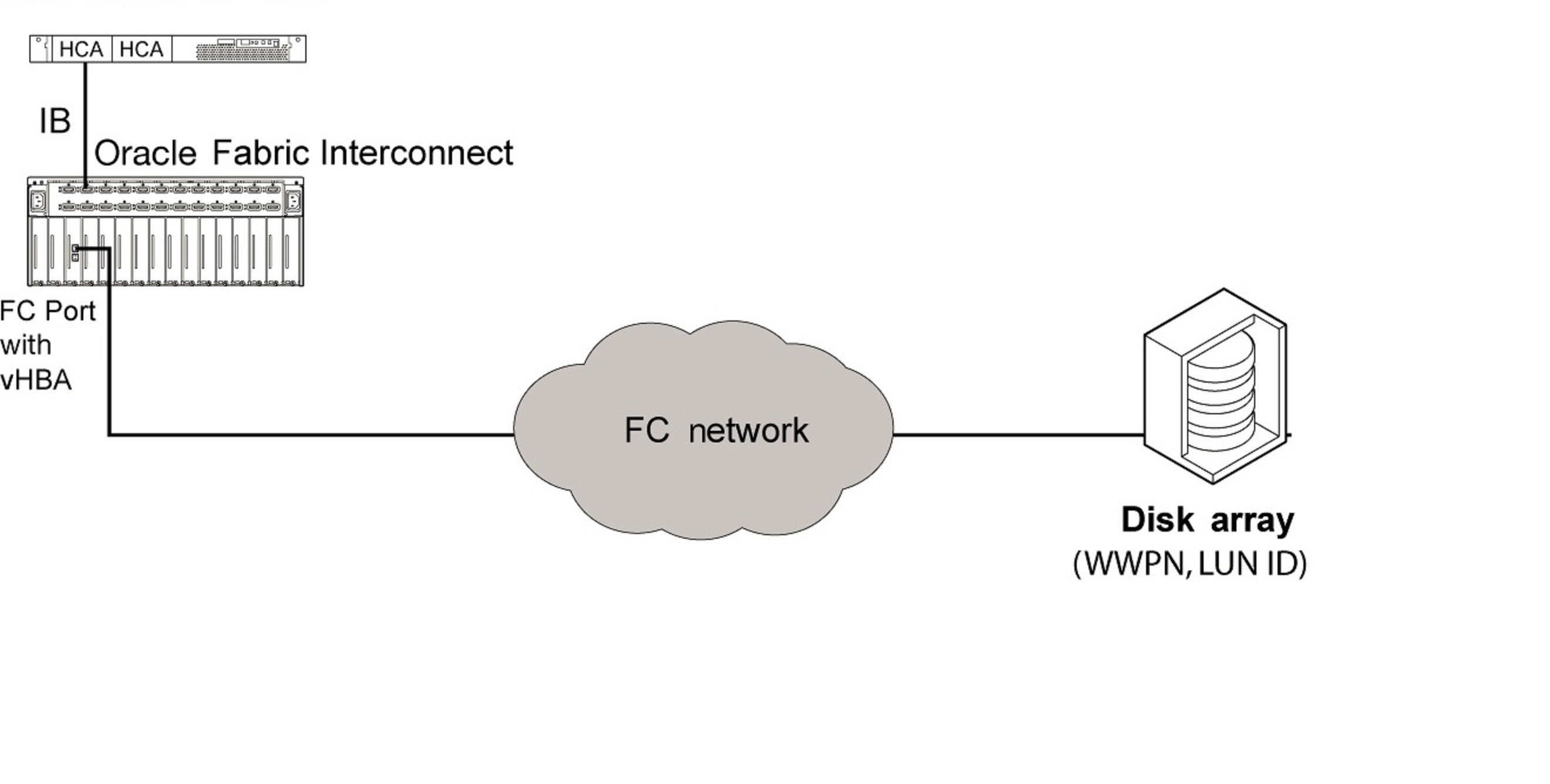Remote Boot Method
Oracle has implemented a ROM BIOS extension for its HCA cards. This extension, called XgBoot, enables you to use Oracle virtual I/O resources as boot devices for the server. You must configure the system BIOS to include XgBoot in the boot order and configure Oracle Fabric Interconnect to make sure virtual resources bootable.
Whatever remote booting process you select, you use the following high-level steps:
-
Set up the boot volume.
You need the boot image available on the network.
-
Configure bootable I/O resources on the Oracle Fabric Interconnect.
For SAN booting, this is a VHBA configured as bootable. For PXE boot, you use a bootable VNIC. Either resource must be assigned to a server profile that is bound to the server that boots remotely.
-
Configure the server.
HCAs on the server must have compatible firmware and their option ROM must be enabled.
-
Connect the server profile on the Oracle Fabric Interconnect to the server.
-
Set the server profile to SAN boot (sanboot=).
Related Information
SAN Boot Method
Storage area network (SAN) boot enables you to boot a Windows host from a SAN volume accessed through a virtual host bus adapter (VHBA). The remote disk to boot from is identified by a target world wide port name (WWPN) and a logical unit number (LUN) on a storage disk array device.
